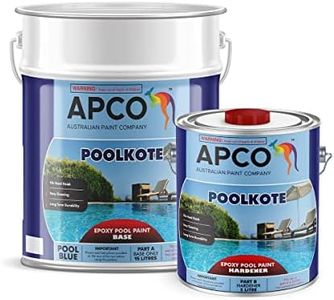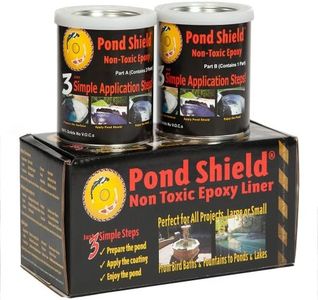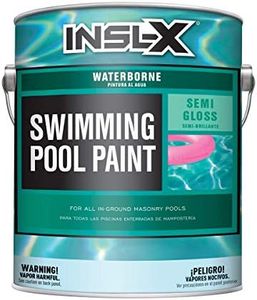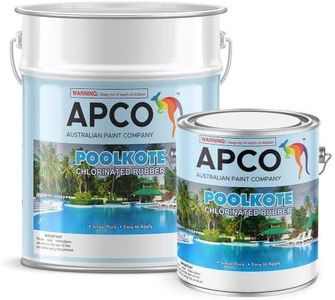We Use CookiesWe use cookies to enhance the security, performance,
functionality and for analytical and promotional activities. By continuing to browse this site you
are agreeing to our privacy policy
5 Best Pool Paints
From leading brands and best sellers available on the web.Buying Guide for the Best Pool Paints
Choosing pool paint is an important part of pool maintenance because it not only helps keep your pool looking fresh and clean, but it also protects the pool's surface from damage, wear, and algae growth. The right kind of pool paint depends on what your pool is made of, how it’s used, and the look you want to achieve. Knowing the main specifications and what they mean will help you narrow down your choices and find the best paint for your pool so it stays beautiful and functional for years to come.Type of Pool PaintThis specification refers to the chemical composition and intended use of the paint. The three most common types are epoxy, rubber-based, and acrylic. Epoxy paints are known for their durability and are best for concrete or plaster pools that need a long-lasting finish. Rubber-based paints are flexible and provide a smooth finish, suitable for previously rubber-painted pools. Acrylic paints are water-based, quick-drying, and generally easier to apply, making them a good choice for pools that need frequent repainting or for areas with cooler climates. Selecting the right type depends on what your pool is made of (like concrete or fiberglass), what paint was used previously, and how much maintenance you’re prepared to handle.
Surface CompatibilityThis tells you which pool surfaces the paint can adhere to—such as concrete, plaster, fiberglass, or gunite. Not all paints work well on every surface. For example, paints designed for concrete might not last long on fiberglass. Before buying, always match the paint with the surface type of your pool for the best results and longevity.
Cure and Dry TimeThis spec indicates how long the paint takes to dry between coats and how long before the pool can be refilled. There are paints that cure in a day or two, while others may need a full week. If you want your pool back in action quickly, look for paints with shorter cure times. Consider your schedule and weather conditions, as cooler and more humid environments can increase drying time.
Coverage AreaCoverage area describes how much surface a single container of paint can cover, usually measured in square feet per gallon. Coverage can vary based on how porous your pool surface is and how thickly the paint is applied. Estimate your pool's total area and check paint labels to ensure you buy enough. This prevents you from running out of paint mid-job or overbuying.
Finish and Color OptionsFinish refers to whether the paint dries to a matte, satin, or glossy look. Some people prefer a shiny, bright blue finish for a classic pool aesthetic, while others may want subdued colors or anti-slip textures. Choose the look and finish that matches your taste and the safety needs of your pool users. Darker colors may keep water warmer by absorbing more sun, but show debris more.
Longevity and MaintenanceThis spec tells you how long you can expect the paint to last before needing a new coat. Epoxy paints can last up to 8 years, rubber-based paints about 5 years, and acrylic paints might need refreshing every 2-3 years. Pick according to how much maintenance you are willing to do and how often you want your pool to look freshly painted.




